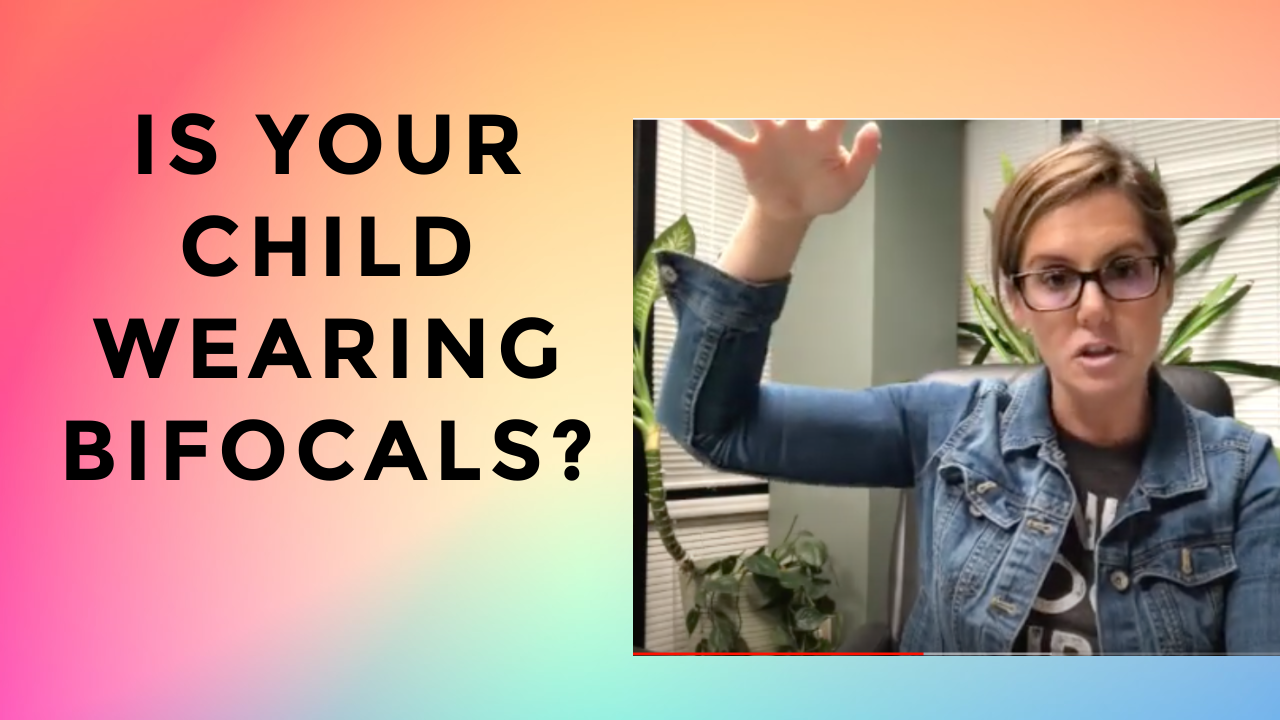Hi, I’m Dr. Julie Steinhauer and on this segment of Ask Dr. Julie, we’ve got a great question from Jim online and Jim asks: “Should young myopes begin by wearing bifocals?” Well, let’s talk a little bit about what all of this means. Myopes are kids or adults who are considered to be nearsighted, which means they’re better sighted for near work, they struggle to see more clearly at distance, so myopia is also called nearsightedness. Now, a young myope would be maybe someone who’s just recently been found to have myopia, and maybe the doctor’s trying to prescribe glasses for them to see better at distance.
Well, Jim, it’s a great question, because at Vision For Life, one of the things that we do is, and I’m really passionate about because I started wearing glasses for myopia at a young age, lies in trying to stop it for kids who start to develop myopia even if they’re age seven or five, or whether we see them at the age of 13. One of the things that we do is we generally, depending on how much myopia they have, is ignore the myopia and prescribe glasses for near work and reading. We also might suggest that if the myopia is coming from something else, like a bigger problem, or a more significant visual issue is causing the myopia, like maybe they can’t use their eyes together well as a team, maybe they have strabismus or an eye turn, if something like that’s the root cause of it, then let’s just treat that and fix that first. So, we’re not big fans of just slapping a bandaid on something; we want to actually get to the root cause.
Now, in cases of myopia where it’s a bigger prescription, maybe we can’t necessarily prescribe reading glasses for them, and maybe it’s farther down the line, they’ve had it for a number of years, or maybe it’s progressive and there’s a lot of it, and there’s no way to get them out of glasses, we’re going to do our very best through syntonics and vision therapy.
But with syntonics and vision therapy, what we’re able to do is electrically retrain the brain how to process vision, and then mechanically come along beside that and train the brain how to process vision better. Maybe that can help us to arrest or stop the myopia in its tracks, and it won’t progress any farther. That’s our goal; maybe we actually can reduce it and reverse some of that. Can we actually reverse all of it? Well, it depends; depends on how much there actually is. So, that’s a case-by-case thing that we would need to address, but you can actually reverse at least some of the myopia if you decide to treat it the correct way.
That was a great question, Jim. Bifocals, I still haven’t answered that, right? So, let’s talk about bifocals. Could you put someone in a nearsighted prescription at the top and give them a reading prescription? Now, normally we tend to think that that might be something that you’d give to Mom or Dad or a grandma or a grandpa, but you can actually do this for kids too. It is a really smart way to reduce the amount of lens prescription they’re looking through for reading, and it can be an efficient way to try and reduce the amount of nearsightedness or myopia that changes on an annual basis for young kids. But depending on the situation, we might do a bifocal, we might do reading glasses only, or we might suggest reading glasses over contact lenses.
There’s lots of options, but in order to make it simple for you, just call us if you happen to be local and you’re wondering, “What on earth can I do, because my young kid just started off with needing to wear glasses for nearsightedness or myopia? What can we do?” Then call us at 618-288-1489. Now, if you’re somewhere else in the world, and you want to connect with us and see what we can do, then go to our website and fill out the questionnaire on the first page of our website, and then that will send over to us, where we can get back in connection with you about what we might be able to do to help your child. Thank you.
